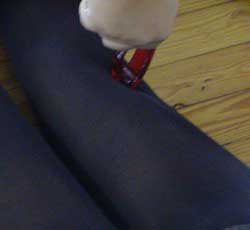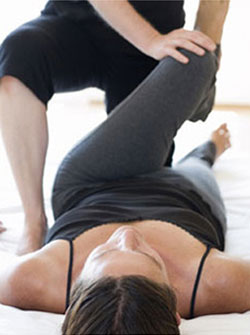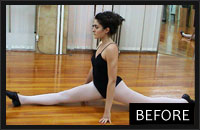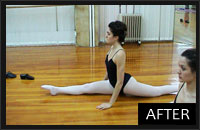
Specialized kinisiotherapy techniques - The trigger point technique

Muscle imbalance at young ages is correctly treated without the use of physiotherapy machines.
The trigger point technique proposed by Travell & Simons can produce truly amazing results, including:
- increased muscle flexibility
- increased strength
- reduction of muscle spasms and pain
- increased articulated rotation of the joints, in arm movements for any performance (theatre, dance school, musicals, etc.)
Its simplicity means that dance students, teachers and professionals can be effectively treated on condition that they are taught by a professional physiotherapist, who is trained in the technique, and are shown how to apply the technique properly.
Muscle imbalance at young ages is correctly treated without the use of physiotherapy machines

Theory and application of the Trigger point technique according to Janet Travell & David Simons
A Trigger Point (myofascial release point) is an especially sensitive spot on the muscle tissue and the corresponding peritoneal layer. The point is sensitive to pressure, and when pressure is applied, pain is provoked together with the characteristic reactions of the autonomic nervous system.
The cycle of creation of a Trigger Point is characterized by:
- Hypertension – antioxidant muscle defense
- Minor injuries to the protoplasmatic network
- Release of Ca ions
- Prolonged muscle spasm
- Ischemia in the area with ion concentration in the muscle occurring with simultaneous concentration of metabolites
- Hardness in the area, which becomes fibrous
- Pain in the same area and in other peripheral areas
- Reduction of muscle flexibility
- The muscle becomes sensitive to bruising and minor injuries
Trigger Points are activated immediately by sudden:
- overload (hypercontraction - hyperdilation) of the muscle
- repetitive strain injury
- direct injury due to cold
Indirectly by other Pressure Points (Τrigger Points)
- visceral injury
- direct injury
- psychosomatic exhaustion
They can be divided into the following categories:
- Active: they are painful, even when pressure is not applied.
- Passive: they are painful only when ischemic pressure is applied.
- Peripheral: TPs, which are located around the periphery of a central TP in the respective muscle.
Muscles presenting a TP, are tensed and shortened and show a restricted range of movement.
Elimination of the pressure point (trigger point) is achieved by ischemic pressure on the trigger point of the shortened muscle for between 30 and 45 seconds and then for 30 seconds on the relaxed area at intervals of 30 seconds for a total of six times.
The results of the technique will be:
- relaxation of the muscle
- increase of the range of movement
- elimination of the trigger point
How the technique is applied
The technique involves even pressure being applied by the thumb and fingers, or by pinching the TP with the thumb and forefinger.
It is necessary to concentrate on the muscles of the lower extremities which can help improve the extensions of dancers, as well as basic moves of classical ballet. Concentration on certain muscles of the upper limbs, to reduce the pain arising from hypercontraction during dance duets is considered useful. Improvement of flexibility with application of the Trigger Point technique proposed by Travell & Simons is also accompanied by increased strength and range of movement.
About Us...
Harmonious movement and the perfection of the natural articulation of joints have, for many years now, been a focus of extensive research and study for us, and form the major objectives which we aim to achieve as a specialist physiotherapy studio. The sensitive nature of dance performers as a whole is an especially captivating area of study, and is one in which we are able to offer appropriately specialized therapies.
Announcements
Our official facebook page is now online and waits for you! Click on like and be the first to learn anything about dancing, dancers, physiotherapy and the improvement of all forms of dance moves!
Physio Art Center proudly informs you that the physiotherapist and founder of the center, Adriani Nikolaidou, has received from the Industrial Property Organization the patent certificate with the title of: Method of increase of the openings of dancers and athletes in the lower ends resulting to the…




